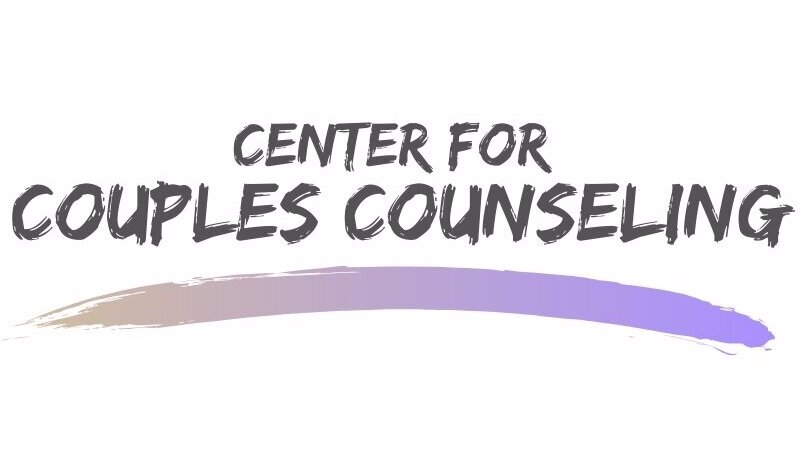How to Regulate Your Nervous System When Living with CPTSD
If your nervous system feels like it’s permanently stuck in survival mode - like you’re either revved up, shut down, or bouncing between the two with zero warning - you’re not broken. You’re not “too sensitive.” You’re not being dramatic. You’re living with a body and brain that has had to adapt to chronic stress, and now it doesn’t always know when the danger is over.
Living with CPTSD means your internal alarm system is a little… extra. It’s not your fault. It was wired that way by experiences where you didn’t get to feel safe, seen, or soothed. But just because your nervous system is used to running the show doesn’t mean it always has to.
Let’s talk about regulation - not the kind that pretends everything is fine, but the kind that actually helps you feel safe in your body again.
First: What Even Is Nervous System Regulation?
Think of your nervous system as the part of you that’s constantly scanning for danger (even when everything looks chill). When you’re dysregulated, your body is reacting like you’re still in the middle of the trauma - even if you’re just standing in the kitchen trying to figure out what to make for dinner.
Regulation is the process of helping your body shift out of fight, flight, freeze, or fawn mode and back into a state where you can think clearly, feel your feelings without drowning in them, and respond instead of react - into a place where you feel more grounded, more connected, and more you.. Easier said than done, right? But totally possible.
Step One: Stop Trying to Logic Your Way Out of It
This is a hard truth: you can’t think your way into regulation. I know you’ve probably tried. You’ve read the books, done the journaling, told yourself it’s not a big deal, tried to “just breathe.” And maybe sometimes that helped a little. But here’s the deal: CPTSD lives in your body.
You’ve got to work with your body to heal this stuff.
Regulation starts with bottom-up tools - things that calm your nervous system through sensation, not explanation. That’s where the magic happens.
Tools That Actually Work (Especially When You’re Spiraling):
1. Move Something
When your body’s revved up, one of the best ways to release the tension is to move. Walk. Shake. Stretch. Dance to one angry song and one sad one. Do ten jumping jacks and yell into a pillow. Your nervous system is trying to do something - help it finish the cycle. Set a timer for 90 seconds and shake out your arms, legs, and shoulders. Let it be weird. Let it be messy. You’re moving energy, not performing for anyone.
2. Ground Like You Mean It
When everything feels out of control, grounding brings you back. Think: touch, texture, temperature. This isn’t just a distraction trick. It’s a way to help your nervous system recover after it’s been hijacked by a perceived threat. When you’re dysregulated, your brain is pumping out stress chemicals like cortisol and adrenaline because it thinks you’re in danger. Grounding through touch, texture, and temperature helps send a signal to your brain: “Hey, we’re safe now.” Hold an ice cube. Splash cold water on your face. Run your hands under warm water. Dig your toes into the carpet. Name five things you see, four things you feel, three you hear, and so on.
Pro tip: Keep a little “grounding kit” in your bag or desk - something textured, something that smells good, something that helps you breathe.
These sensory cues help activate the prefrontal cortex (the part of your brain that helps with regulation and decision-making) and ease the grip of the survival brain. The more you practice grounding, the more your system learns how to recover faster after being triggered.
3. Breathe, but Not Like That
Not all breathing helps. If you’re panicking and someone says “just breathe,” it’s not super helpful unless you know how. When we breathe deeply and intentionally, especially with a longer exhale, we activate the parasympathetic nervous system - this is your body’s rest-and-digest mode. It’s the opposite of fight-or-flight. This kind of breathing helps flip the internal switch from “everything is on fire” to “okay, maybe I’m not dying right now.” Try box breathing (inhale 4, hold 4, exhale 4, hold 4) or extended exhale breathing (inhale for 4, exhale for 6). The exhale is where your body starts to chill out. Add some humming or sighing. The vagus nerve (our built-in calming system) loves sound.
4. Co-Regulate (Yes, Even As an Adult)
Regulation isn’t always a solo gig. Sometimes your nervous system needs a little backup. That’s not weakness - that’s biology.
Humans are wired for connection. We’re pack animals. When you’re with someone who feels safe, your body starts to mirror theirs - heartbeat, breathing, muscle tension. This is called co-regulation, and it’s one of the most powerful tools we’ve got for calming a dysregulated system.
When you reach out to someone calm, grounded, and attuned, their nervous system sends out this subtle but strong signal:
“We’re okay. You’re safe here.”
And your system listens. It’s not magic - it’s neurobiology.
Here’s what co-regulation might look like:
Letting someone hug you, or even just sit beside you without saying a word
Texting a friend: “Can you help me ground?” or “I’m struggling—can you just be here for a sec?”
Looking at photos of safe people, pets, or places
Listening to a familiar voice (a friend, a therapist, a podcast that makes you feel seen)
When you’ve lived with CPTSD, especially developmental trauma, your nervous system may have learned that people = danger. So isolation becomes the default, even when it’s hurting more than it’s helping. But healing? That happens in connection. Not overnight, not perfectly, but little by little, nervous system to nervous system. Let yourself reach out. You don’t have to be “fine” first. You deserve connection exactly as you are.
But What If I’m Numb, Not Anxious?
Ah, freeze mode. The fun one where everything shuts down and you feel nothing… except maybe guilt for not feeling more. This is still dysregulation. And it’s still valid.
The goal here is gentle stimulation like warmth, movement or connection to your body. Wrap up in a blanket. Hold something warm. Move your fingers. Put on music with a beat. Pet your dog. No pressure to feel instantly better - just invite your body back a little at a time.
Regulating Isn’t About Being Calm All the Time
Let’s be real: you’re not going to reach some enlightened state where you never get triggered, never get overwhelmed, never go to your therapist like “everything is terrible and I hate everyone.”
Regulation is about getting back to yourself faster. It’s about giving your body what it didn’t get before: safety, choice, and care.
Over time, it gets easier. Not perfect - but easier. You’ll start noticing when you’re going into survival mode before you snap or shut down. You’ll pause instead of spiral. You’ll trust your body instead of resenting it.
And that? That’s healing.
If no one ever taught you how to feel safe, how to calm down without collapsing, how to be in your body without wanting to crawl out of it, that’s not your fault. CPTSD taught you how to survive, not how to regulate.
But now? You get to learn. Slowly. Messily. And with compassion.
So the next time your nervous system is sounding the internal alarm - sirens blaring, red lights flashing, all because someone looked at you weird or didn’t text back… pause. Move. Breathe. Ground. Remember: your body is doing what it was trained to do. And now you’re retraining it.
You’re not overreacting. You’re healing.
Let’s keep going.
My name is Jaimi Douthit and I’m a Licensed Professional Counselor at the Center for Couples Counseling. I love working with couples and individuals who are ready and motivated to make changes in their lives and relationships, who can handle feedback and encouragement, and engage in using the tools I teach in therapy outside of the therapy room. At the Center for Couples Counseling, we specialize in couples therapy, infertility counseling, postpartum mood and anxiety disorders, self-care and burnout, and perfectionism. We help couples and individuals in the League City and Houston areas in person, and all residents of the State of Texas online. Call us at (832) 827-3288 to schedule a free phone consultation.
Begin Couples Therapy in League City, TX
We know relationships take a lot of hard work. But your relationship is important and deserves the effort. At Center for Couples Counseling we want to help you and your partner get back on the right track. To get started with in-person or online couples therapy follow these simple steps:
Meet with one of our skilled couples therapists
Begin to see positive changes in your relationship
Other Services Offered at Center for Couples Counseling
At the Center for Couples Counseling, we understand you or your relationship may be facing different challenges. To help you work on yourself and your relationship, our Texas practice offers individual therapy, infertility counseling, postpartum anxiety, and depression counseling, therapy for self-care and burnout, and therapy for perfectionism. For more about us check out our FAQs and blog!





